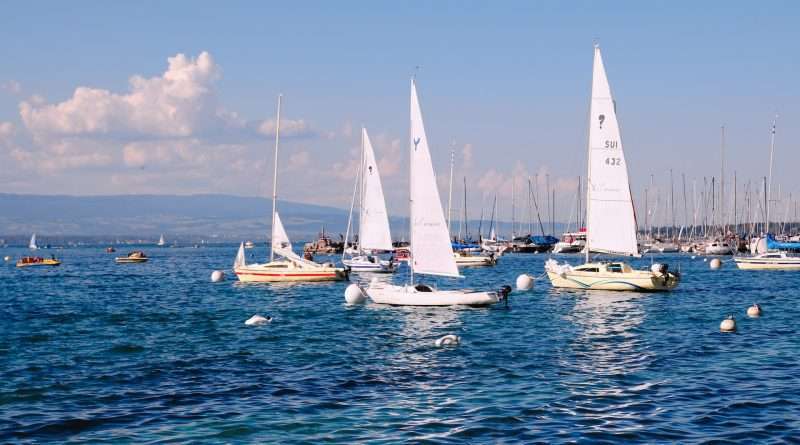Lake Geneva: History, Geography, and Highlights
Lake Geneva, or Lac Léman, is a substantial body of water situated on the northern side of the Alps, straddling the borders of Switzerland and France. Renowned as one of the largest lakes in Western Europe and the largest along the course of the Rhône, Lake Geneva encompasses a total area of 582 km². Approximately 60% of the lake (345.31 km²) belongs to Switzerland, spanning the cantons of Vaud, Geneva, and Valais, while the remaining 40% (234.71 km²) lies within the French department of Haute-Savoie.
Etymology
The name of Lake Geneva has evolved, with its origins traced back to the period of Julius Caesar. The Latin term “Lacus Lemanus” was prevalent during this era, derived from the Ancient Greek “Liménos Límnē,” translating to “port’s lake.” Over the centuries, the name transformed through various iterations, including “Lacus Lausonius” and “Lac de Lausanne” in the Middle Ages. Despite the rise of Geneva and the subsequent naming of the lake as “Lac de Genève,” “Le Léman” remained prevalent on local maps and continues to be widely used in the French language. In English, “Lake Geneva” has become the predominant term.
Geography
Lake Geneva presents a diverse geographical landscape, divided into three distinct parts based on its formation processes: sedimentation, tectonic folding, and glacial erosion. These include the Haut Lac (Upper Lake), Grand Lac (Large Lake), and Petit Lac (Small Lake), each possessing unique characteristics. The Swiss Federal Office of Topography, Swisstopo, specifically designates “Lac de Genève” as part of Petit Lac within the cantonal borders of Geneva.
The lake’s surroundings are characterized by the Chablais Alps to the south, the Bernese Alps to the east, and notable summits such as Grand Combin and Mont Blanc visible from various points. Lake Geneva also serves as a central point in the Rhône’s course, with numerous tributaries feeding into it, including La Dranse, L’Aubonne, and La Veveyse.
In terms of dimensions, the lake stretches 95 km along its northern shore and 72 km along its southern coast, adopting a crescent shape. The lake’s greatest depth is between Évian-les-Bains and Lausanne, reaching 310 meters.
Environment and Ecology
Lake Geneva has witnessed significant environmental changes over the years, including issues related to pollution and eutrophication. In the late 1960s, pollution levels rendered certain beach areas unsafe for swimming and severely diminished visibility underwater. By the 1980s, the lake’s fish population had almost been eradicated. However, substantial efforts to reduce pollution have led to a marked improvement in water quality, reinstating Lake Geneva as a safe location for swimming and other recreational activities. The lake is now home to various leisure activities, such as sailing, rowing, and scuba diving, and housing a rich diversity of wildlife, particularly bird species.
Submarine explorations have also occurred in Lake Geneva, with Jacques Piccard’s tourist-oriented submarine, Auguste Piccard, one of the most notable examples. Additionally, the lake played a pivotal role in scientific history, hosting the first measurement of the speed of sound in fresh water in 1827.
Tourism and Recreation
Lake Geneva is a hub for tourism, offering a range of activities and sights for visitors. The Compagnie Générale de Navigation operates a fleet of paddle steamers and boats, providing transport and tour options across the lake. Landmarks such as the Jet d’eau in Geneva and the Chillon Castle near Montreux add to the lake’s appeal, while the vineyards of Lavaux offer a scenic backdrop for those exploring the region. Whether taking a leisurely cruise across the Haut Lac or indulging in the culinary delights of a themed trip, Lake Geneva offers an unparalleled experience for all.

